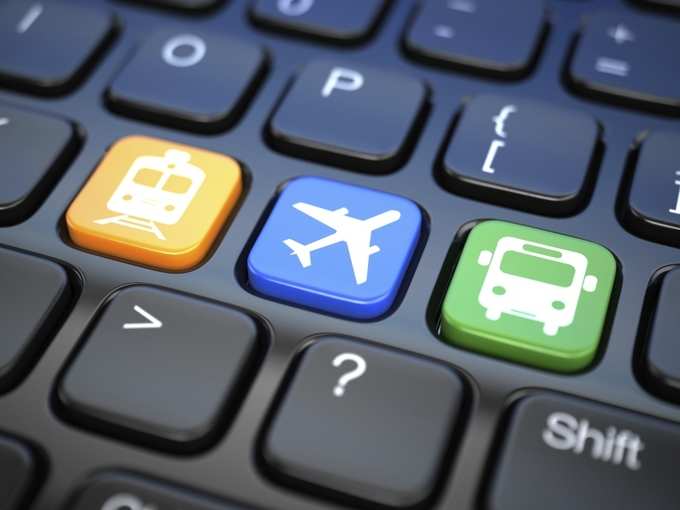
Till two years ago, more than 90% of online travel aggregator’s business was taking place on desktop with dominant share of contribution (+80%) from the low margin, low network effect category of airline tickets. The mobile has significantly changed this equation over the last one year. If I look at my portfolio of businesses, which is a strong representative in the Indian market (viz redBus and
There has been a lot of talk about “mobile commerce” and how it is changing the way businesses are being run; however, the impact it have had on the online travel category is more than what really meets the eye. Given that I have been right in the center of this evolution, I am going to attempt to share insights on what is driving this change and talk about trends that are changing the world of online travel—for better.
Mobile channel economics are more profitable
In the desktop world, there is a high cost of traffic acquisition, including the use case of people searching for the company’s brand. Traffic sources would comprise direct type in (free), SEO (free), brand SEM (paid) and non brand SEM (paid), besides other paid sources such as Facebook, display advertising etc. Typically for a strong brand, SEM brand investments will account for anywhere from 25% to 45% of daily search advertising budget. Even for non brand SEM one would end up spending on returning users that could account for 20%+ of the traffic. These channel economics in comparison to native mobile are poor. On native mobile after overcoming the hurdle of installation, 85%+ transactions on a daily basis take place from repeat users that are part of the installed base. For these transactions there is zero cost of traffic. This makes per transaction unit economics on mobile healthier by almost 40% versus that of desktop. This is transformational for online travel commerce in the country. In reality, one can reinvest part of these enhanced margins back to the consumer in the form of “price benefits”, “loyalty” and “referral” which in turn drives mobile app adoption for “travel aggregators”.
Hotels and bus categories are driving mobile app adoption
Till a year ago, hotels transactions on mobile for goibibo accounted for 15%, but now this has significantly grown to almost 60%. Similarly mobile transactions on redBus have grown to 45% from 12% a year ago. On the other hand, air transactions on mobile for most players stand in the range of 20% to 38%. The reason for hotels and bus driving this trend is rooted in the fact that the booking behavior is changing to closer to check-ins and departure.
40% of hotel bookings are for the same day check-in. Typically users are making hotel bookings at the last minute after they land in a city or town. Location context plays a very critical role. For example “Hotels near me”. As a result mobile becomes the only source for making a hotel booking.
If I look at data goibibo’s hotel booking on mobile, the same has grown by 13x year on year versus air that has grown by 3x in the same period.
This also means that mobile is driving transition of online travel businesses from ‘scale effects’ to ‘network effects.’
User experience and user participation
User experience is yet another factor that has played an important role in mobile adoption. Aspects such as “GPS locations”, “trackability”, “card storage”, “wallets”, “travelers check list”, “photo reviews”, “real time chat” etc are mobile only / mobile first features. There are two significant examples I would want to share. First is bus tracking feature on redBus mobile app. This enables travelers to track the bus location via their mobile app in real-time. Another example is of the ratings and reviews feature on the goibibo app. Consumers checking in to hotels are enabled to share real-time pictures of the properties; this helps potential bookers view photos shared by travellers and at the same time communicate amongst the community while on the go!
The examples above clearly demonstrate the power of mobile in action. Something that was never possible on the desktop!
Seller participation/ Seller facing apps
I have talked about buyer/ traveler facing apps. However for valuable networks to be created, sell side apps are a very critical part of the evolution. Long tail of hotels/ budget accommodation owners, bus operator, taxi operators are also embracing the mobile revolution. These constituents have been enabled with mobile apps to manage their inventories, prices, content, ratings and reviews, accounts, payments etc. Thanks to mobile, more real-time inventory and prices are made available. This in turn drives trust amongst the buy side of the equation. In the past, it was only “Air” as a category that had moved its prices, inventory, reservation engines online, albeit sitting on legacy monolithic engines. However, mobile has given wings to categories such as accommodation/ hotels, buses, cabs, car sharing etc. by enabling the sell side of the equation to digitize their inventories, prices and catalogues.
I would like to conclude this article by saying that “Mobile is not about porting the desktop to the small screen. It is about leveraging the real power of the mobile : Comprising : Location, Camera, user interface, communication, phone graph etc.”
And it is only going to be the players leveraging this power that stand a greater chance to win!
(About the author: This article has been contributed by Ashish Kashyap, Founder & CEO, Ibibo group)
(Image: Thinkstock)
